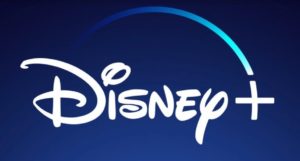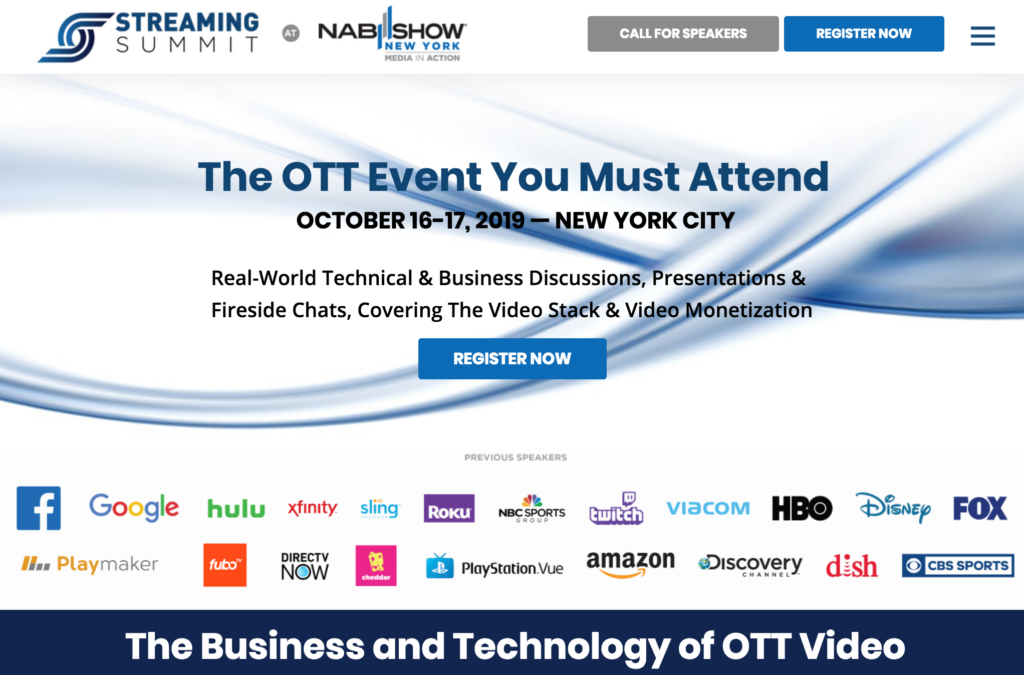The Challenges and Best Practices For Inserting Ads Into OTT Downloadable Videos
When Disney+ launches in November, one of the unique features of the service is that 100% of their video catalog will be available via download, for offline viewing. As OTT services evolve, more consumers are going to expect content to be available offline as part of the user experience. While Disney+ won’t include adds within their videos, many AVOD providers are looking at how the feature presents a huge revenue opportunity, especially for mobile. Yet, given how new the tech is, there are many questions AVOD providers have about how the technology works and whether or not it can truly integrate into an ad-supported business model.
For the most part, the reason AVOD providers haven’t offered download capabilities in the past (while some SVODs have) is that delivering video advertising offline adds a lot more technical complexities. Most importantly, any ad-based video download feature must include processes to ensure that ads are always able to remain timely and monetized and it’s harder to do measurement and reporting of ad viewership. If a viewer is served an ad past a date when it can be monetized, time is wasted and money is lost. So if a viewer downloads a video, providers have to be certain the ads attached will still be current, even if the viewer doesn’t watch the asset for two weeks. This is crucial because if the initial ads downloaded with a video asset are, for example, promoting a Labor Day sale at a retail store, they will no longer be relevant if the viewer watches after the holiday, and the ad creative is then no longer profitable.
I recently spend a few hours in-person with Penthera to learn how their platform uses dynamic ad insertion, so that after a video is downloaded onto a user’s device, the ads are regularly refreshed in the background (when the user isn’t using the app but is connected to cellular or Wifi) to ensure that ads served are up to date and monetized. The company says video ads are typically monetized if played within 3 to 4 days, on average. Based on the configured refresh window, Penthera receives a notification that tells their platform to update the ad in the background before the monetization expires, typically about 2 days before. This guarantees that downloaded ads are always timely and monetized when attached to a video stream.
Both providers and advertisers need accurate information about who is seeing ads, but tracking viewership becomes more complicated when users aren’t connected to a Wifi or cellular network. Penthera calls its solution agnostic, which means it can plug into existing ad systems such as FreeWheel, Google Ads, and SpotX. Because of this, the downloaded ads have the same targeting capabilities and analytics reports on ad performance as streaming ads. The ad server is still able to provide all the standard insights into the ad performance, and Penthera’s SDK provides additional analytics around when the downloaded content starts or stops, download progress, and whether the downloaded video was watched. This means, by integrating into existing advertising infrastructure, ad-supported video downloads can act as an extension of streaming ad campaigns.
The success of certain digital ad campaigns isn’t only measured in terms of impressions, but also by viewer click-throughs. Naturally, clicking through to an online landing page is impossible when the user isn’t connected to the internet. But Penthera has come up with an interesting work-around for this, so that offline ads can still promote engagement: their SDK is built to track click-heres. This means that, even when offline, a viewer can click on an ad. Later, once they are connected to the internet again, the viewer receives a notification reminding them that they were interested in the ad content, with a link directing them to the appropriate landing page, website, or App Store.
Penthera says their data shows that a large majority of users watch downloaded video while their device is online. This is an interesting insight, as it demonstrates that users are downloading content because they either value the experience they get from offline playback over streaming or they are generally watching content while on cellular networks in order to limit data plan usage. What this means for advertisers, however, is that in the many instances, playing downloaded video with ads functions much the same as if the user was online. The advertising beacons (the network calls that inform the ad networks that an ad was played) can be reported immediately when the impression occurs, just like existing beacons. However, if the user happens to be offline when they play their video, the technology steps in to support the process. Penthera’s SDK catches the beacons and records the exact moment they were triggered. Then, later when the device gets back online (even if the user doesn’t open the video app again), the beacons and the time they were recorded are sent to the advertising platforms to be recorded. Thus, all offline advertising impressions have a chance to be monetized.
In addition to beacon management, you also have to have to manage dynamic offline advertising loads. The value of advertisements typically diminishes rapidly from the point an ad is initially delivered. The ads with the highest value usually have a short validity window before they don’t pay out. An effective offline advertising platform needs to be able to balance the needs of the publisher to delivery high-value ads with the needs of the advertiser to have ads only display when they’re valid. Penthera’s says their solution allows advertisements, delivered via both server-side and client-side insertion methods, to be refreshed and updated over time, without requiring the video to be re-downloaded. They are also considering the ability to download multiple ad loads simultaneously (some with high value, but short expiry, and some with lower value, but longer expiry) to better insure that when the customer wants to play a video, there’s always the ability to include a monetizable ad.
I’ve written before about the importance of download as a feature within OTT services and how it may be a big business opportunity for AVOD providers. But this will only hold true if the technology can work seamlessly with existing apps and ad-based revenue models. From what I’ve learned about Penthera, it appears as though they’ve solved for some of the biggest challenges of taking AVOD offline. Now we just need more OTT services, both AVOD and SVOD, to start including downloads as an option, to enable additional monetization options.

 There is an immediate opening for a Solution Architect, Front End Development, with one of the largest public M&E companies in the world($200B+ market cap). They have multiple live/VOD OTT offerings and will coming out with more. I am helping the person you will report to find the right candidate for this job, which is based in NYC (not negotiable) and pays $130k-$150k. This job is not currently listed online. I’ll also add, your boss is someone you would want to work for. I know them on a personal level and they have a very unique background. You would learn a lot from them and be given an opportunity to be amongst some extremely smart individuals. If you are interested in learning who the company is and more about the job, please
There is an immediate opening for a Solution Architect, Front End Development, with one of the largest public M&E companies in the world($200B+ market cap). They have multiple live/VOD OTT offerings and will coming out with more. I am helping the person you will report to find the right candidate for this job, which is based in NYC (not negotiable) and pays $130k-$150k. This job is not currently listed online. I’ll also add, your boss is someone you would want to work for. I know them on a personal level and they have a very unique background. You would learn a lot from them and be given an opportunity to be amongst some extremely smart individuals. If you are interested in learning who the company is and more about the job, please  In the second quarter of this year, Dish, Comcast, Spectrum and DIRECTV combined have lost 1.3M pay TV accounts. Add in what Verizon may have lost in Q2, when they report earnings on Thursday, and we could see a number near 1.5M pay TV subscribers lost in Q2. Projections are that combined, the cable TV and satellite companies will lose about 5M pay TV subscribers in 2019.
In the second quarter of this year, Dish, Comcast, Spectrum and DIRECTV combined have lost 1.3M pay TV accounts. Add in what Verizon may have lost in Q2, when they report earnings on Thursday, and we could see a number near 1.5M pay TV subscribers lost in Q2. Projections are that combined, the cable TV and satellite companies will lose about 5M pay TV subscribers in 2019. In June, I completed a survey of 238 customers using on-prem and cloud based security solutions from Akamai, Fastly and Cloudflare. The survey collected data on customer’s deployment architecture, spend per year, preference for bundling security with other cloud/CDN services, pricing changes, transition from on-prem to cloud, and which vendors are being used, amongst other data points. If you are interested in purchasing the full set of data,
In June, I completed a survey of 238 customers using on-prem and cloud based security solutions from Akamai, Fastly and Cloudflare. The survey collected data on customer’s deployment architecture, spend per year, preference for bundling security with other cloud/CDN services, pricing changes, transition from on-prem to cloud, and which vendors are being used, amongst other data points. If you are interested in purchasing the full set of data,  With the launch of the Disney+ streaming service taking place November 12th, there has been a lot of speculation on Wall Street on what the value of that video traffic might be to Akamai and other CDNs. Two weeks ago, PiperJaffray put out a report saying that by 2024, the Disney+ traffic business “could result in $68M in revenue for Akamai.” And when combined with traffic from Hulu and ESPN+, Disney could be a “>$100M Media customer by 2024.” I’ve been getting so many questions about these numbers that I thought a blog post that details some of the costs and deployment details would be helpful. There are also some statements made in the Piper report that are inaccurate and need correction.
With the launch of the Disney+ streaming service taking place November 12th, there has been a lot of speculation on Wall Street on what the value of that video traffic might be to Akamai and other CDNs. Two weeks ago, PiperJaffray put out a report saying that by 2024, the Disney+ traffic business “could result in $68M in revenue for Akamai.” And when combined with traffic from Hulu and ESPN+, Disney could be a “>$100M Media customer by 2024.” I’ve been getting so many questions about these numbers that I thought a blog post that details some of the costs and deployment details would be helpful. There are also some statements made in the Piper report that are inaccurate and need correction.
 Thursday night, CDN provider Fastly will price their shares and go public Friday morning under the ticker FSLY, looking to raise around $170M, with shares expected to price between $14-$16 a share. At the higher end of the price range, it would value Fastly at around $1.4B. The company has raised $219M to date and ended 2018 with 449 employees.
Thursday night, CDN provider Fastly will price their shares and go public Friday morning under the ticker FSLY, looking to raise around $170M, with shares expected to price between $14-$16 a share. At the higher end of the price range, it would value Fastly at around $1.4B. The company has raised $219M to date and ended 2018 with 449 employees.